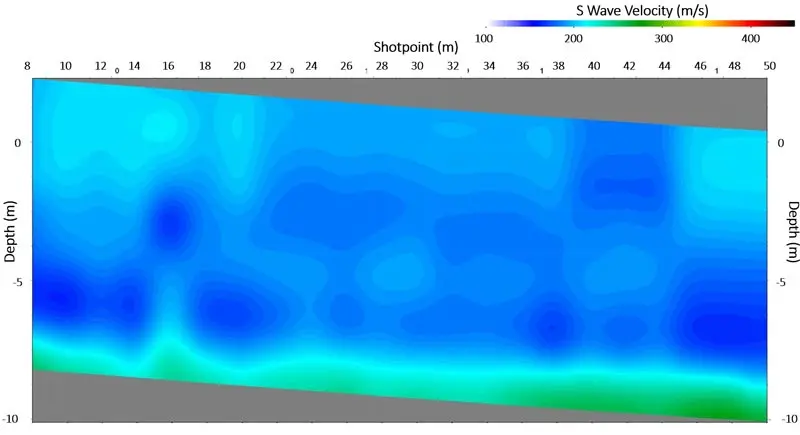Near-Surface Geophysics
Distributed Acoustic Sensing (DAS) provides a powerful tool to image the near-surface using customised single-mode or multi-mode fibre or by using so-called dark fibre.
Advancements in Silixa’s phase-coherent iDAS technology have opened new perspectives for environmental monitoring.
Seismic imaging and subsurface monitoring with iDAS can be applied in a wide range of settings, from mining to archaeological projects. Its applications include characterisation of sites for infrastructure projects; understanding ice sheet flow and deformation; monitoring sediment and fluid mud; and assessing near-surface processes such as compaction, landslides, groundwater flow or gas migration.
Silixa’s iDAS, the intelligent Distributed Acoustic Sensor, converts an optical fibre into a spatially dense array of seismic sensors. The iDAS interrogators are sensitive to a broad frequency range from mHz to kHz, making them well-suited to near-surface seismic surveys. Geophysical DAS surveys facilitate cost-effective near-surface geophysics imaging over large distances.

Shear wave velocity, Vs, profile from an active source MASW survey recorded on iDAS.
Seismic near surface geophysics imaging with a wide range of frequencies
The iDAS is a broadband instrument sensitive to frequencies from 1mHz to 50KHz making it a sensor suitable for the full-range of geological and geophysical methods.
The iDAS provides dense channel spacing (<1m) over large distances (up to tens of kilometres), making detailed site characterization and near-surface imaging possible over large distances with one instrument.
Cost-effective data collection
iDAS data can also be recorded using pre-existing telecommunication fibre networks (dark fibre), thereby minimising deployment costs and saving time. This also makes busy industrial sites accessible without the need to disrupt work or traffic.
Fibre-optic cables can be permanently installed making repeatable time-lapse measurements possible over tens of years. iDAS interrogators can be operated remotely, enabling on-demand surveys.
Minimum maintenance
The sensor (the optical fibre itself) does not have any electrical or moving parts and therefore a DAS system requires minimal maintenance. Minimising manual intervention saves time and costs.
Multiple measurements available with one cable
Using the same fibre-optic cable seismic (DAS) measurements can be combined with strain (DSS) and temperature (DTS) measurements to facilitate integrated interpretation and provide greater insight into links between seismic events and fluid flow and ground deformation.
- Multichannel Analysis of Surface Waves (MASW) surveys
- Ambient noise interferometry imaging
- Seismic refraction surveys
The broadband sensitivity of the iDAS (1mHz to 50kHz) makes it suitable for any subsurface seismic survey.
The iDAS measures the true amplitude, phase and frequencies of seismic waves and the dense spatial and temporal sampling afforded by the instrument captures the full wavefield, making it ideal for mapping applications.
The iDAS provides high-quality geotechnical data which can be quality controlled (QC) onsite. This is particularly important when using pre-existing dark fibres. Data can be collected continuously or triggered by a seismic source.



